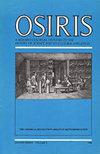复利修正:近代早期英国金融未来的想象数学
IF 1
3区 哲学
Q2 HISTORY & PHILOSOPHY OF SCIENCE
引用次数: 1
摘要
未来的钱今天值多少钱?在17世纪,随着商人和政府部署面向未来的金融技术,如抵押贷款、债券和年金,关于未来财富“现值”的问题成为了实际关注的问题。这些问题也引起了数学家的注意。本文考察了两位英国数学家——不知疲倦的数学八卦约翰·柯林斯(John Collins, 1625-83)和不太知名的托马斯·沃特金斯(Thomas Watkins, 1710 - 20)——对金融时间数学的探索。在今天的资本主义实践中,现值问题总是用一种单一的技术来处理,即复利贴现,这种技术已经深深植根于商业、政府和法律基础设施中。然而,对于早期的现代思想家来说,如何最好地计算未来的财务状况是一个悬而未决的问题。柯林斯和沃特金斯都探索了富有想象力的替代方案,以取代后来成为复利正统观念的东西。在通信网络的帮助下,柯林斯探索了单利贴现,这引发了关于调和级数和双曲曲线的棘手数学问题;沃特金斯精心设计了多种数学技术来“纠正”未来金融的复利方法。虽然这两个项目都被证明是失败的,但研究这些被放弃的未来使我们能够在资本主义理性成为“黑箱”之前研究其关键要素的发展。本文章由计算机程序翻译,如有差异,请以英文原文为准。
Compound Interest Corrected: The Imaginative Mathematics of the Financial Future in Early Modern England
What is money in the future worth today? In the seventeenth century, questions about the “present value” of future wealth became matters of practical concern, as businesspeople and governments deployed future-oriented financial technologies like mortgages, bonds, and annuities. Those questions also attracted the attention of mathematicians. This essay examines the excursions two English mathematicians, the indefatigable mathematical gossip John Collins (1625–83) and the lesser-known Thomas Watkins (fl. 1710s–20s), made into the mathematics of financial time. In capitalist practice today, present-value problems are invariably dealt with using a single technique, compound-interest discounting, which has become deeply embedded in commercial, governmental, and legal infrastructures. Yet, for early modern thinkers, the question of how best to calculate the financial future was an open question. Both Collins and Watkins explored imaginative alternatives to what would become the compound-interest orthodoxy. With help from his network of correspondents, Collins explored simple-interest discounting, which provoked thorny mathematical questions about harmonic series and hyperbolic curves; Watkins crafted multiple mathematical techniques for “correcting” the compound-interest approach to the financial future. Though both projects proved abortive, examining those forgone futures enables us to examine the development of a key element of capitalistic rationality before it became “black-boxed.”
求助全文
通过发布文献求助,成功后即可免费获取论文全文。
去求助
来源期刊

Osiris
管理科学-科学史与科学哲学
CiteScore
1.10
自引率
0.00%
发文量
18
审稿时长
>12 weeks
期刊介绍:
Founded in 1936 by George Sarton, and relaunched by the History of Science Society in 1985, Osiris is an annual thematic journal that highlights research on significant themes in the history of science. Recent volumes have included Scientific Masculinities, History of Science and the Emotions, and Data Histories.
 求助内容:
求助内容: 应助结果提醒方式:
应助结果提醒方式:


